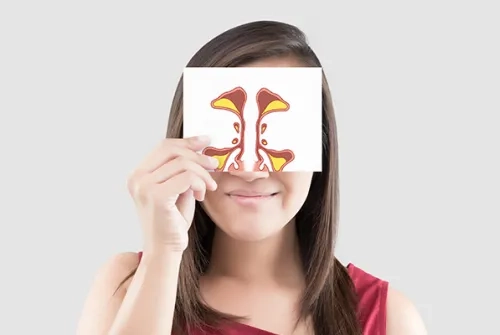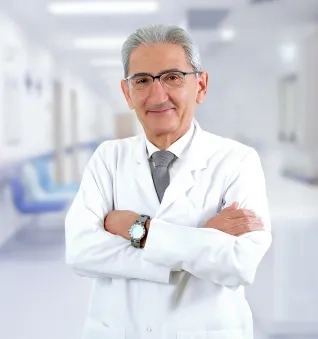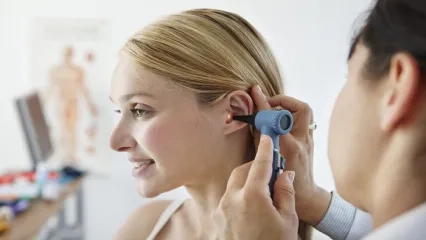Alo Yeditepe
Alo Yeditepe
Treatment without Tampons in Nasal Surgeries
When it comes to patient and physician-friendly innovations in nasal and sinus surgeries, the first thing that comes to mind is the tampons used after surgery. Otorhinolaryngology and Head and Neck Surgery Specialist Prof. İlhan Topaloğlu, MD. said, “However, at the point reached today, patients can return to their daily life more comfortably and quickly without the need for tampons after these surgeries”.
In addition to the developments in technology and medical materials over the years, nasal surgeries have become much more patient and physician friendly after the otorhinolaryngology experts have improved themselves and their techniques. In this way, successful and permanent results can be obtained. Yeditepe University Kozyatağı Hospital Otorhinolaryngology and Head and Neck Surgery Specialist Prof. İlhan Topaloğlu, MD. stated that there are new developments in nose and sinus surgeries every day, and continued, “When it comes to nasal health, some innovations that have been used widely in the last 10 years stand out”.
Nasal Surgery without Tampons
Until recently, when the nose bone curvature (deviation) surgery was mentioned, tampons used after surgery came to mind. Stating that there are still people who postpone nasal surgery due to this perception today, Prof. Dr. Topaloğlu gave the following information: “In the past, the patient had to use tampons for a day or two after surgery. While cloth tampons were used in the previous years, later ones made of spongy material or silicone came into play. These prevented the patient from breathing easily, made it difficult to eat, and caused pressure in the ears. Nowadays, the number of physicians performing nasal surgery without tampons is increasing. Thus, much more patients can have this type of surgery. " The tampon is usually used to bond two mucous membranes together after the pathological tissues are corrected or removed in surgery. Today, the mucosa can be stitched together frequently with melting stitches. Thus, when the patient comes out of the surgery, he can breathe more easily than ever before, the inside of the nose heals more easily, and he can return to daily life faster.
Balloon Synoplasty in Sinusitis Treatment
Innovations in sinus surgeries bring many conveniences for both the patient and the physician. Thanks to the balloon synoplasty method, surgery is performed without the need to break, cut or tear the tissue. In this method, a balloon system is used, similar to the system used to open blocked vessels in cardiology. First, a thin light fiber guidewire is sent to enter the sinus. Then, the balloon sent deflated over the guidewire is inflated at the sinus entrance and the obstruction in the area is opened. The sinus is washed with medication and the interior is cleaned. Prof. Dr. Topaloğlu stated that medicated cents have been developed for sinuses in Europe and the USA just like in cardiology, and these products will be used in our country in the near future, “Thus, the opened sinus mucosa will be prevented from becoming chronic due to reasons such as mucosa, infection or allergy. The results obtained in this treatment method will be more physiological and permanent."
Secure View with Navigation
Advances in surgical navigation devices provide convenience in nasal surgery. Prof. Dr. İlhan Topaloğlu stated that the regions that had difficulties to reach in nose surgeries in the past years could be reached more efficiently under navigation and said, “With this technology, surgeries are performed more safely. We can control where we are on the face and where we are approaching when we perform surgery in this area, which is very close to the eye and the brain, where the nerves and vessels are dense. We use the navigation method in advanced cases, in tumor surgery and in patients who have had repeated operations"
Use of Laser for Reducing Conchae
Conchae have functions such as moisturizing, heating and filtering the air. In the past, enlarged conchae were partially or completely removed or electrical methods were used to reduce them. However, reminding that the removal of conchae prevents him from performing its duties, Professor Dr. İlhan Topaloğlu continued his words as follows: “While electrical methods shrink the conchae, they damage the nasal mucosa. In laser application, the extended conchae is reduced by entering many desired areas into the area with laser fiber without damaging the mucosa. The flesh of the nose can grow again, even at low rates. But with the laser method, the results are better in the long run. "
Press Coverage: hurriyet.com | cnnturk.com | sondakika.cc | hastane.com | mahmure.com
About
Faculty and Year of Graduation:
Istanbul University, Faculty of Medicine, 1980
Alo Yeditepe




